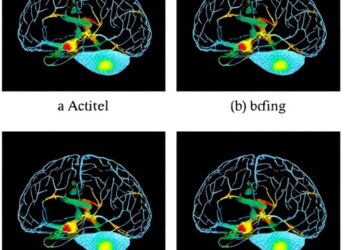In a groundbreaking study poised to reshape our understanding of amyotrophic lateral sclerosis (ALS), researchers have uncovered a critical cellular mechanism that accelerates neurodegeneration specifically in ALS-vulnerable motor neurons. Employing a zebrafish model, the team demonstrated how the intrinsic processes governing cellular degradation are profoundly exacerbated by the loss of TDP-43, a protein long implicated in ALS pathology. This discovery not only offers a fresh perspective on the molecular underpinnings of one of the most devastating neurodegenerative diseases but also opens promising avenues for therapeutic intervention.
ALS, commonly known as Lou Gehrig’s disease, is characterized by the progressive loss of motor neurons, leading to muscle weakness, paralysis, and ultimately, respiratory failure. Despite decades of research, the mechanisms that confer vulnerability to certain neuronal populations, while sparing others, have remained elusive. The pivotal role of TDP-43, an RNA-binding protein found aggregated in the cytoplasm of affected neurons, has been a central focus. However, the precise cellular consequences of TDP-43 loss and how it impacts neuronal health have continued to mystify neuroscientists.
The research led by Asakawa, Tomita, Shioya, and their colleagues utilized the zebrafish, a vertebrate model organism prized for its genetic tractability and transparent embryos, enabling real-time observation of cellular processes. By engineering zebrafish with targeted loss of TDP-43 specifically in motor neurons, the team was able to mimic the pathological hallmarks observed in human ALS. They closely monitored the dynamics of cellular degradation pathways, particularly focusing on proteostasis – the delicate balance of protein synthesis, folding, and clearance, essential for neuronal survival.
One of the study’s most striking findings was the intrinsic acceleration of cellular degradation pathways in motor neurons lacking TDP-43. While cellular degradation mechanisms, such as autophagy and the ubiquitin-proteasome system, typically function to eliminate damaged proteins and organelles, their hyperactivation in the absence of TDP-43 led to detrimental effects. This hyperactivity is thought to overwhelm the neurons’ capacity to maintain homeostasis, triggering a cascade of degenerative events that culminate in neuron death.
Further investigation revealed that this amplified degradation is not a generalized response but is severely pronounced in motor neurons known to be vulnerable in ALS. This selective vulnerability highlights the intricate cell-type specificity that defines ALS pathology. By dissecting the molecular signatures unique to these neurons, the study revealed differential expression patterns of genes associated with cellular clearance, stress response, and inflammation, all exacerbated by TDP-43 loss.
The implications of these findings extend beyond mechanistic insights. They suggest that therapeutic strategies aimed at modulating cellular degradation pathways, either by tempering their hyperactivity or restoring proteostatic balance, could potentially halt or slow down the progression of ALS. Importantly, the zebrafish model provides a powerful platform for screening small molecules and genetic interventions to modulate these pathways, accelerating the discovery of viable treatments.
Moreover, the study illuminates the nuanced role of TDP-43 beyond its established function in RNA metabolism. The protein’s influence over cellular degradation highlights a previously underappreciated facet of its biology, integrating proteostasis with RNA regulation. This crosstalk might be a central node in the pathology of neurodegeneration, particularly where misfolded proteins accumulate and disrupt neuronal architecture.
The use of advanced imaging techniques and molecular markers allowed the team to capture the temporal progression of motor neuron degeneration. Observations revealed that intensified degradation pathways coincide with early disruptions in mitochondrial dynamics and synaptic function, indicating that energy metabolism deficits and synaptic impairments precede overt neuron loss. These insights anchor the pathological timeline and underscore the importance of early intervention.
In the broader context of neurodegenerative research, the study adds to a growing body of evidence linking proteostasis dysregulation to diseases such as Alzheimer’s, Parkinson’s, and Huntington’s. However, the pinpointed amplification of degradation pathways due to TDP-43 loss in ALS-susceptible motor neurons underscores the unique vulnerabilities of these cells and differentiates ALS pathogenesis from other disorders.
Another innovative aspect of the research lies in the genetic manipulation tools employed. Using CRISPR/Cas9 genome editing, the researchers achieved precise, cell-type-specific knockout of TDP-43, avoiding systemic effects that confound interpretation. This specificity was crucial in delineating cell-autonomous effects of TDP-43 loss and mitigating compensatory mechanisms often observed in whole-organism knockouts.
Complementing the genetic approaches, transcriptomic analysis of isolated motor neurons illuminated networks of gene regulation disrupted by TDP-43 deficiency. The data revealed upregulation of autophagy-related genes and stress-induced chaperones, reinforcing the concept of an overwhelmed degradation system struggling to maintain proteome integrity.
Aside from fundamental research, the study’s translational potential beckons renewed hope for patients suffering from ALS. While current treatments offer limited benefit, strategies emerging from this work could focus on pharmacological agents that fine-tune degradation pathways or augment the function of residual TDP-43, preserving motor neuron health.
Future studies may delve deeper into the signaling pathways that link TDP-43 function with degradation machinery, potentially uncovering novel molecular targets. Additionally, validation of these findings in mammalian models and human-derived neurons will be pivotal steps toward clinical translation.
In summary, this seminal work reveals that TDP-43 loss exerts a profound effect on inherently accelerated cellular degradation mechanisms in motor neurons, amplifying the degenerative cascade characteristic of ALS. By unraveling these complex biological interactions in a zebrafish model, the research not only advances our comprehension of ALS pathogenesis but also illuminates promising therapeutic targets, sparking optimism in the fight against this relentless disease.
Subject of Research: The intrinsic acceleration of cellular degradation pathways in ALS-vulnerable motor neurons and the amplifying effect of TDP-43 loss, studied in a zebrafish model.
Article Title: Intrinsically accelerated cellular degradation is amplified by TDP-43 loss in ALS-vulnerable motor neurons in a zebrafish model.
Article References:
Asakawa, K., Tomita, T., Shioya, S. et al. Intrinsically accelerated cellular degradation is amplified by TDP-43 loss in ALS-vulnerable motor neurons in a zebrafish model. Nat Commun 16, 9213 (2025). https://doi.org/10.1038/s41467-025-65097-0
Image Credits: AI Generated




